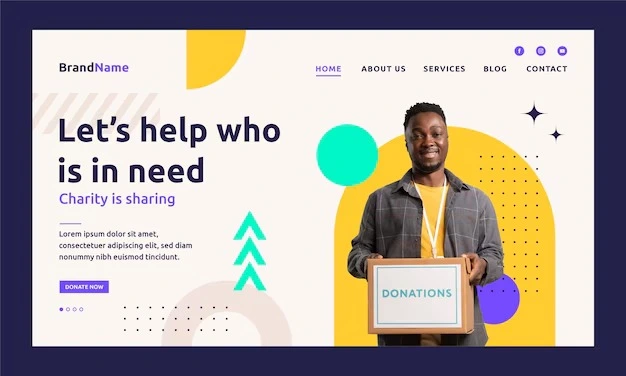How to Build a High-Converting Landing Page
Published on March 24, 2025

Author: Yiga Richard
A landing page is a critical tool for driving conversions, whether your goal is to generate leads, promote a product, or encourage sign-ups. A well-optimized landing page helps capture attention, communicate value, and persuade visitors to take action.
This guide outlines the essential elements of a high-converting landing page and how to implement them effectively.
1. Define Your Objective
Before creating your landing page, clearly define its purpose. Common goals include:
-
Capturing leads through a sign-up form
-
Encouraging product purchases
-
Driving registrations for an event or service
Every element on the page should align with this objective to create a focused and effective user experience.
2. Craft a Clear and Compelling Headline
The headline is the first thing visitors see, so it should immediately convey the page's value. A strong headline is concise, benefit-driven, and action-oriented.
Instead of saying:
"Our Software is the Best in the Market"
Use something more compelling:
"Boost Productivity by 50% with Our Smart Workflow Tool"
3. Support with a Strong Subheading
A well-written subheading provides additional context and reinforces the value proposition. It should address a key challenge your audience faces and how your product or service solves it.
For example:
"Struggling with project management? Our tool automates workflows so you can focus on what matters most."
4. Use High-Quality Visuals
Visuals play a key role in engagement and conversions. Relevant images or explainer videos can enhance understanding and make the page more appealing. Use:
-
A high-quality hero image that represents your product or service
-
Short, informative videos that highlight key benefits
-
Simple graphics to emphasize important points
5. Write Persuasive and Concise Copy
The landing page content should be clear, engaging, and easy to scan. Use short paragraphs, bullet points, and benefit-driven language to communicate key information effectively.
Instead of:
"Our platform leverages AI-driven automation to enhance workflow efficiency."
Use:
"Save hours of manual work with AI-powered automation that streamlines your tasks."
6. Include a Clear Call-to-Action (CTA)
A strong CTA directs visitors toward the desired action. It should be:
-
Prominently placed on the page
-
Written in action-oriented language (e.g., "Get Started Today", "Download Now")
-
Designed with contrasting colors to stand out
For example:
"Start Your Free Trial – No Credit Card Required"
7. Minimize Distractions
A high-converting landing page maintains focus by eliminating unnecessary elements. To achieve this:
-
Remove navigation menus to keep visitors engaged
-
Limit external links that could lead users away from the page
-
Use whitespace effectively to create a clean, distraction-free layout
8. Build Trust with Social Proof
Adding trust signals to your landing page can increase conversions. This may include:
-
Customer testimonials and case studies
-
Reviews and success stories
-
Partner logos or security badges to establish credibility
For example, featuring a customer quote such as:
"Since using this tool, our team has reduced project turnaround time by 40%."
9. Optimize for Mobile Responsiveness
A significant portion of web traffic comes from mobile users, so your landing page must be fully responsive. Key considerations include:
-
Ensuring the layout adjusts seamlessly to different screen sizes
-
Using easily clickable buttons and simple forms
-
Keeping text readable without zooming or scrolling excessively
10. Test and Optimize for Performance
To maximize effectiveness, continuously test and refine your landing page based on user behavior. Best practices include:
-
A/B testing different headlines, CTAs, and layouts to determine what works best
-
Analyzing performance metrics such as conversion rates and bounce rates
-
Improving page load speed to reduce visitor drop-off
Conclusion
A high-converting landing page is built on clarity, simplicity, and a focus on the user’s needs. By crafting a strong headline, using compelling visuals, writing persuasive copy, and optimizing for engagement, you can create a landing page that effectively drives conversions.
Apply these best practices to your next landing page and watch your results improve.